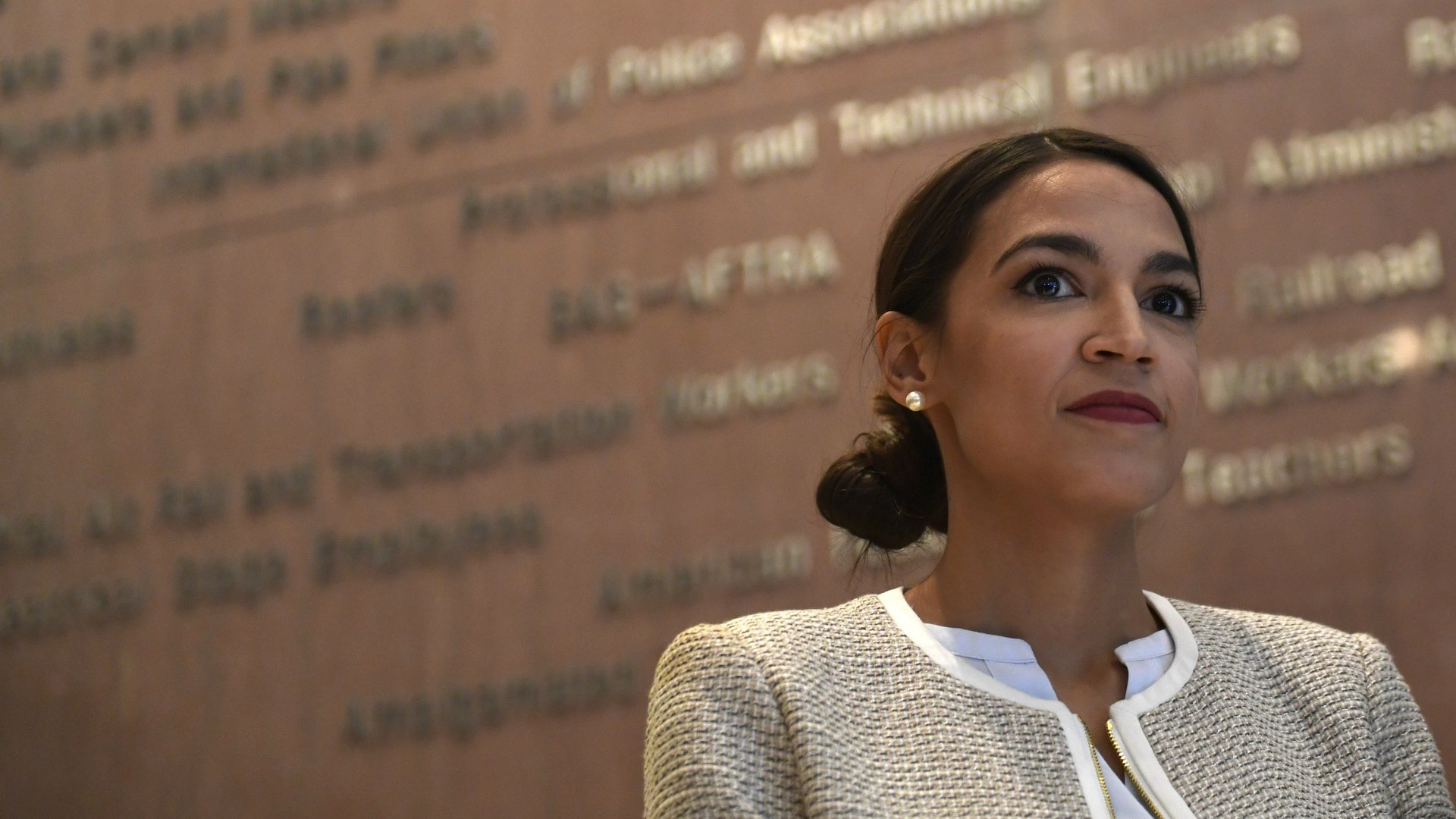What’s a universal basic income doing in Ocasio-Cortez’s “Green New Deal”?
In 2007, the New York Times columnist Thomas Friedman wrote a story calling for a “Green New Deal.” Friedman explained that he no longer believed that there was one silver-bullet program that would solve climate change. Rather, just as a variety of programs were part of former US president Franklin Roosevelt’s “New Deal” for economic revitalization in the 1930s, so it would take a variety of investments in environmentally-friendly technologies to help stabilize the climate.


In 2007, the New York Times columnist Thomas Friedman wrote a story calling for a “Green New Deal.” Friedman explained that he no longer believed that there was one silver-bullet program that would solve climate change. Rather, just as a variety of programs were part of former US president Franklin Roosevelt’s “New Deal” for economic revitalization in the 1930s, so it would take a variety of investments in environmentally-friendly technologies to help stabilize the climate.
Friedman almost certainly could not have imagined that some day politicians would propose a Green New Deal that might include a universal basic income.
Newly elected US congress member and rising Democratic star Alexandria Ocasio-Cortez campaigned for office on an ambitious climate-change platform which she also calls a Green New Deal. The plan has gained attention and supporters over the last month, and is becoming a main talking point among Democrats who are looking for a meaningful agenda for the party over the next decade. Ocasio-Cortez envisions the federal government leading efforts to eliminate greenhouse-gas emissions by investing in renewable energy infrastructure, improving the efficiency of residential and industrial buildings, and constructing an energy-efficient electricity grid.
Ocasio-Cortez’s Green New Deal, however, involves taking on not only climate change, but also poverty and inequality. To achieve the Green New Deal’s goals, the government would need to hire millions of people. Ocasio-Cortez sees this as an opportunity to transform the economy. The Green New Deal would include training and education for workers, as well as a federal job-guarantee program. Further, all investments would be focused on low-income communities. Presenting climate-change mitigation as a jobs program, rather than an economy killer, may be politically savvy.
As if all that wasn’t ambitious enough, the Green New Deal would also include “basic income programs, universal healthcare programs and any others as the select committee may deem appropriate to promote economic security, labor-market flexibility, and entrepreneurism.” It is basically everything liberals desire and more. Supporters defend the need for these welfare programs as ways to alleviate the disruption that would be caused by the elimination of fossil fuel-supported jobs. With a universal basic income and government-guaranteed health care, losing your oil-industry gig wouldn’t be as bad.
The program would of course be very expensive. It’s hard to estimate how much it would cost, as the details are still murky. Green Party leader Jill Stein estimated that her version of the Green New Deal, which is less ambitious than the one presented by Ocasio-Cortez, would cost $700 billion to $1 trillion annually. Ocasio-Cortez says hers would be funded by debt spending and tax increases.
In Friedman’s original conception, the government played a much smaller role in the Green New Deal. He believed the government’s place was not in funding projects, but in seeding research and creating tax incentives and efficiency standards (paywall), and that harnessing the power of the private sector was the key to taking on climate change. While Ocasio-Cortez believes the private sector has a role to play, she argues that the scale of the project is too big to leave to government-guided market forces. The Green New Deal has come a long and very expensive way.